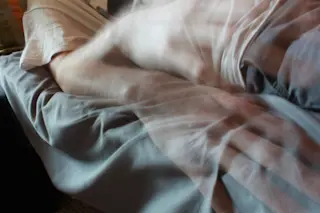Even if a wife's voice is not music to a man's ears, it may be melodic to his brain.
Psychiatrist Michael Hunter and fellow researchers at the University of Sheffield in England monitored the brain activity of 12 men as they listened to voice recordings and found they process male voices differently from those of females. Women's voices stimulate an area of the brain used for processing complex sounds, like music. Male voices activate the "mind's eye," a region of the brain used for conjuring imagery.
One reason, Hunter suggests, is that women generally have shorter vocal cords and a smaller larynx, giving them higher-pitched voices. Women's voices may also have more "natural melody," he adds. Qualities like pitch and volume vary more during speech. "There's more prosody in female speech."
Newspaper articles about Hunter's research said that men find the female voice more difficult to hear and understand. But Hunter thinks the opposite is true. Because the brain is apparently deciphering the modulation in women's voices, a female voice might be able to communicate more information per sentence than a male voice. "Most people at a railway station say female announcers are clearer," he says. "Maybe it's this added input."
Hunter speculated about why the male voice activates the brain's visual region: "Perhaps men listening to male voices try to picture what the speaker looks like." Hunter's findings might also explain why hallucinations usually involve male voices. "If the brain had to produce a voice from nothing, it might go for a more basic version—the male voice." The next step, he says, is to find out whether men's or women's voices are music to the female brain.
"Men Hear Women's Melodies." "Male and Female Voices Activate Distinct Regions in the Male Brain." Dilraj S. Sokhi et al. in NeuroImage, Vol. 27, No. 3, pages 572–578; September 2005.













